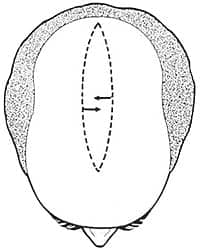Mark A. Pinsky, MD, is the chief of plastic surgery at Saint Mary’s Medical Center, West Palm Beach, Fla. Certified by the American Board of Plastic Surgery, Pinsky completed his general surgery and plastic surgery training at the University of Texas in Houston. He was a participant in the Juvéderm™ clinical trials.

Juvéderm is different because of its Hylacross technology, which offers a softer and smoother product with more natural results—as opposed to other gel–particle-suspension hyaluronic acids currently on the market. The most important feature of Juvéderm is its greater persistence.
What about other filler materials?
I think Juvéderm is a better alternative than other fillers because of its persistence, versatility, and low adverse-event profile. Other fillers work in concert with Juvéderm, such as Captique™, CosmoDerm®, and CosmoPlast®. Captique is used for the tear-troughs because it is in water equilibrium, which means it won’t swell after injection, which is important in such a sensitive, thin area. CosmoDerm is used around the peroral rytides, where the material is injected superficially. CosmoPlast also works with Juvéderm to treat deep lines. Using the two products together, one on top of the other, is known as combination therapy.
According to your Web site, treatment with Juvéderm lasts up to 6 months or longer. What gives the filler long-lasting results?
The proprietary Hylacross technology is the reason why there are long-lasting results. In addition, Juvéderm contains the greatest amount of hyaluronic acid per mL and the greatest amount of cross-linked hyaluronic acid per mL available in the US market. In our clinical investigation of 439 patients, the average amount of filler material required for 100% correction of moderate to severe nasolabial furrows was 1.5 mL per side. Patients were invited to come back when they felt it was necessary to re-treat, and many did not return until after 12 to 17 months following their initial treatment. The amount of filler needed at retreatment was only 0.5 mL per nasolabial furrow, which suggests considerable persistence of Juvéderm.
Juvéderm contains a high concentration of “cross-linked” hyaluronic acid. What are some benefits of fillers made from cross-linked hyaluronic acid?
Hyaluronic acid is a naturally occurring sugar in the body. Cross-linking is technology that affords many fillers a greater persistence. In the case of hyaluronic acids, there are two primary cross-linkers: divinyl sulfone and butanediol digycidyl ether. The latter has been shown to be more effective in terms of persistence. In general, the greater the concentration of cross-linked hyaluronic acid, the greater the persistence, with all other variables being equal.
The manner by which the hyaluronic acid and the cross-linking agent are formulated (Hylacross technology) have an effect not only on persistence, but also on gel hardness and smoothness.
What are some side effects of the filler?
The adverse-event profile for Juvéderm was very similar to another brand of injectable collagen implant that has been around for more than 25 years. All the side effects were minor, required no intervention, and cleared up within 7 days.
Is the filler safe to use on all skin types?
To my knowledge, Juvéderm is the only dermal filler that has been found to be safe and effective in patients of color.




